The Rise of Mobile Apps
The main steps for a successful mobile app development strategy are:
1) identifying the value of your app
2) creating a UX sketch
3) building a wireframe
4) launching a minimal viable product
5) continuing to improve your app design
6) choosing your development type
7) considering a low-code platform
Mobile applications have become a staple of everyday life. People use apps for almost everything now - shopping, communication, entertainment, education. If you can think it, there is probably an app out there for it! If you work on the business side of things, then you may utilize apps for your daily work functions, such as accounting, inventory management, and time tracking.
The scope of mobile app usage cannot be stressed enough. Research from Statistica shows that there are over 7 billion smartphone users globally. We spend 90% of our mobile time using the various applications available. And why shouldn't we? The creation of these apps are an innovation that makes our lives easier. That is why many individuals and companies are willing to invest in different solutions.
If you are one of those people thinking about developing a mobile application, here are some steps to guide you through your mobile app strategy.
Before you do anything else, you must understand your target audience through some in-depth market research. Your app idea might seem great to you, but will it seem that way to the people you are selling to? That is the question you must answer.
To do this, you must identify the value of your app. An application must provide value. That means that is solves a specific problem for your target audience in a way that has not been addressed before. You either need a completely original app idea that has not been done before or an idea that significantly improves upon what is currently available.
For example, let's say you were crafting an app that can be used to form delivery routes. If there's an app that already does that, you could improve on it by forming an app that also optimizes the route to be the most fuel-efficient. The unique value that your app provides could also be something as simple as being priced lower than your competitors with similar features. Whatever it is, this unique value gives you something to market. Instead of just adding to the sea of preexisting apps, you provide something that stands out. When you begin to market your app, this will be crucial.
Conducting this research requires looking at multiple sources. First, go onto different app stores and look at the leading apps most similar to yours. Make a list of these apps and record information such as their number of downloads, cost, and average reviews. In terms of downloads, if an app has a high number of them, research the company and their resources. If their resources far exceeds you, the market may be too difficult to enter because it will be easier for them to market. Cost is something to keep in mind because if you can price your app cheaper, you have a marketing advantage. If an app has a high rating, look through the reviews and determine what users like about the app, as well as some complaints they may have. If an app has a low rating, be sure not to repeat their mistakes.

.png?width=1920&name=Untitled%20design%20(4).png)
Once you have refined your app idea and made sure that it is viable, you need to take it out of your head and put it down on a piece of paper by creating a UX sketch - a hand sketch of your idea. You do not want to jump straight to trying to build your app because otherwise you'll find yourself in a cycle of creating and deleting. First, solidify your ideas with a pencil.
In your sketch, include the different screens of your app, their functionality, and how they connect to each other. Don't worry about design elements for now. Simply focus on drawing out what the app will do. Keep in mind that your users do not expect an all-purpose solution. Too many features and data will slow your app down and make it less user-friendly. A UX sketch helps everyone on your team have a clear idea of the app and its objectives. Add explanatory notes along the way to better aid this process.
Once you have a clear image of what your app is and what it will look like, it is time to build a wireframe. A wireframe is like a refined, digital version of your hand sketch. It shows a 2d layout of the screens of your app, including the key elements that will be on the screen like buttons. Many designers make this wireframe in black and white because once again, the goal here is not design, just functionality. It is the template through which your graphic designers will later add design elements. Wire framing allows you to make changes, add page interactions, and reduce the overall cost of your project. Wireframes also help avoid misunderstandings with web designers and
software developers
Once you have your app idea completely developed, you don't want to try to build the entire idea right away. Instead, you should launch a minimal viable product (MVP). An MVP has just enough functionality to be launched as an app and used.
User research and testing are critical to your app design project. Before you spend your entire app budget, real users need to evaluate your app to understand which aspects are working or need improvement prior to adding on more features. With your MVP, your goal is to conduct regular usability testing, analyze feedback, and ensure that your app idea is viable. Gather more information on user pain points, behaviors, and demographics and use that to inform further development. This is the basis from which you continue to add features to your app based on how users respond.
.png?width=500&height=281&name=Untitled%20design%20(5).png)
As you can see in this sample app, there is not really that much emphasis on design. Instead, it has the basic elements of a workout routine.
.png?width=1920&name=Untitled%20design%20(6).png)
Once you have launched your MVP and collected relevant data, you need to continue to improve your app design.
The main difference between a good quality app design and poor quality app design is the user experience. Ease of use, loading speed, and overall customer satisfaction are integral to app design. Great app design is easy to navigate, well organized, and pleasing to the eye.
App design combines the user interface (UI) with the user experience (UX). UI refers to an app's colors, fonts, look and feel, while UX focuses on functionality and usability. Investing time and effort in creating a great user experience increases user engagement. Use subsequent app updates after your MVP to determine what works and what doesn't.
Testing should be a priority. Not testing your app throughout the development and design phases will make finding and fixing bugs more difficult and complex later. Standard checks help reduce the overall costs.
Creating the perfect app is hard to achieve the first time. App designers need to see an application as an evolving project. There needs to be an effective build-measure-learn process where you assess each decision according to your business objectives and user requirements.
We have already mentioned the essential steps to take at the beginning of your app development journey - market research, wireframes, and MVPs. In this section, we will address the two types of development and development platforms.
There are two types of development options that you need to choose from. Native app development refers to developing an app for either iOS or Android, while cross-platform development refers to creating an app for both. With native app development, you are creating the app for just that platform, so the app will have much better functionality because there is no compromise in the tools you are using. If you go with cross platform development, some tools may only work for one platform, meaning that your app cannot include them. This difference in performance means that native apps are more likely to do well in their app store.
.png?width=1920&name=Untitled%20design%20(7).png)
Will you prioritize cost or performance?
Now, even though native app development may seem like the better choice, it comes with a tradeoff - cost and speed. With native app development, you would need to create a different app for IOS and Android, which means that you will be spending significantly more time and money. It is up to you to decide whether your want to prioritize performance or cost.
In terms of an app development platform, there is some flexibility. For making wireframes and MVPS for your app, you usually would need to hire a developer. However, this can be costly, especially when you don't even know if your app idea is feasible. Instead, consider a no-code app builder or low-code app development software. These solutions allow users to build an application without coding expertise or with limited app development skills. With Alpha Software Community Edition, you will be able to create wireframes and MVPs for free. This will ensure that you can test out your app idea without going over budget.

Consider citizen developers learning to build mobile apps

Consider skilled developers who need to gain productivity
To implement the best app development strategy, you need to understand your target audiences and define your business goals. At the beginning of the development phase, you need good rough sketches, wireframes, and an MVP (Minimal Viable Product). A critical part of the process is to choose your development platform. Don't forget to keep testing and gathering user feedback throughout the process. Then it's time to deploy your app and bring it to market, but that's not all. Continuously updating and improving your solution is critical to a successful app development journey.
With the right app development strategy, companies are in a better position to produce the high-value apps they need faster.
This means the entire process of business requirements gathering, app creation, app design (UI/UX), app deployment and app updating have all been thought through. At the same time, the critical elements of data security, data integration and data governance are all considered with proper policies in place for each.
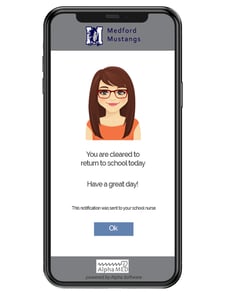
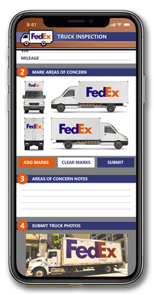
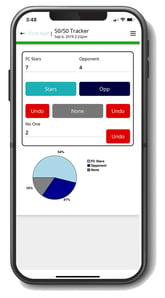
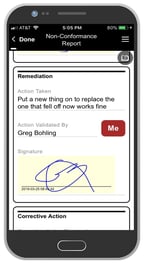
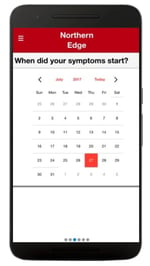
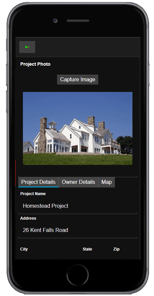
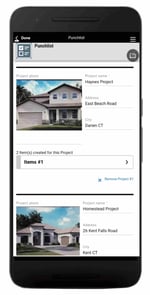
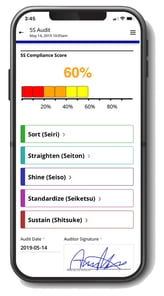
Alpha Software works with enterprises of all sizes looking to mobilize their business or implement a digital transformation strategy. The Company can help understand your organization's needs and help determine a strategy and solutions right for you. Developers can build all the apps they need for free using Alpha Anywhere Community Edition low-code software. Citizen developers who cannot code benefit from the Alpha TransForm no-code app maker.
The Alpha platform is the only unified mobile and web app development and deployment environment with distinct “no-code” and “low-code” components. Using the Alpha TransForm no-code product, business users and developers can take full advantage of all the capabilities of the smartphone to turn any form into a mobile app in minutes, and power users can add advanced app functionality with Alpha TransForm's built-in programming language. IT developers can use the Alpha Anywhere low-code environment to develop complex web or mobile business apps from scratch, integrate data with existing systems of record and workflows (including data collected via Alpha TransForm), and add additional security or authentication requirements to protect corporate data.
Alpha Software Corporation, based in Massachusetts, produces award-winning software that speeds mobile and web app development and deployment for business and IT. The core technology includes two components. Alpha Anywhere®, a full-stack low-code app development platform for building and deploying web and mobile apps. In just hours, Alpha TransForm® turns complex paper forms into powerful mobile forms that speed data collection.
Alpha Software is an InfoWorld Technology of the Year award winner, and scores near-perfect reviews from customers on crowdsourced review sites.
Customers rate Alpha Software highly for its speed of development, flexibility, offline apps, rich feature set and ability to scale predictably. For more information, visit https://www.alphasoftware.com/